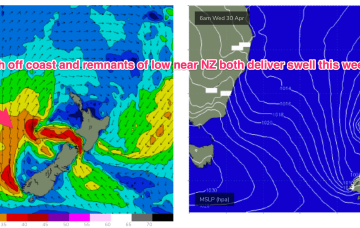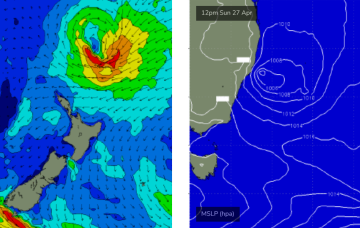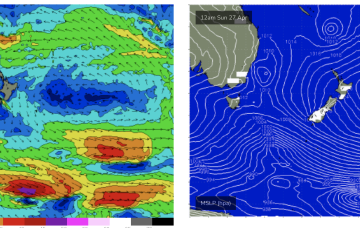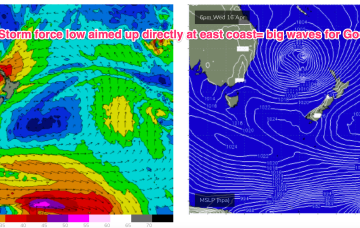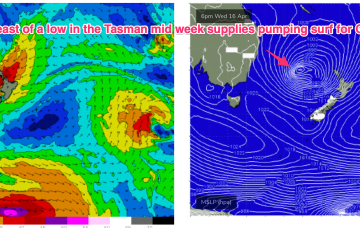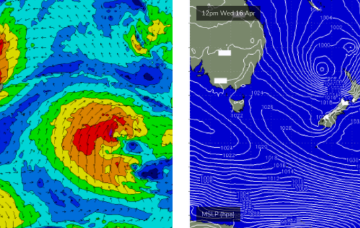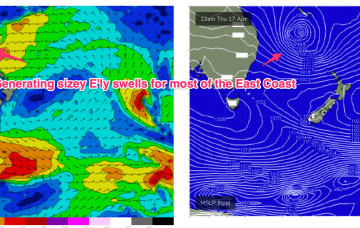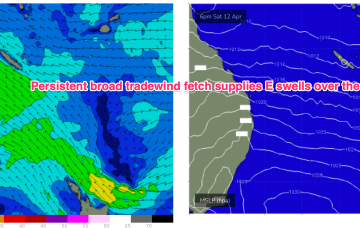We’ll see another front and trough develop mid week on the leading edge of the dominant high, which sees a strong S/SE-SE fetch develop through the lower Tasman from mid week. Plenty of swell from this source with a strong ridge along the NSW seeing fresh S’lies, easing into the weekend.
Primary tabs
This combo of low period and southerly swell direction doesn’t make sense for Far Northern NSW and SE Qld, but good surf has eventuated quite a few times before.
We’ve got a slow moving high sitting east of Tasmania and a trough of low pressure off the North Coast directing an onshore flow across most of the Eastern Seaboard and generating plenty of local swell.
We’ll see the trough bring onshore winds and swell as it moves up the NSW Coast through the first half of this week. That will mostly obscure some traces of long period S swell pushing up the Tasman. A distant low in the South Pacific currently in Tongan latitudes will send some small but good quality E’ly swell late this week, with more favourable winds.
We’ve already reached the peak of this impressive event and so we’re looking at a steady drop in size both Saturday and Sunday.
After a binary interaction between the two systems, the merged low transitions into a storm force sub-tropical low which tracks SW into the Northern Tasman. This storm force low has a broad fetch aimed directly at the East Coast, generating a large E’ly quadrant swell for Good Friday and the Easter weekend with uncommonly large swell periods for swells from that direction.
We’ve got a very dynamic week ahead, anchored by very strong high pressure moving into the far-southern Tasman and acting as anvil for a deep low which is expected to form in the tropical South Pacific between New Caledonia and Vanuatu o/night into tomorrow before drifting SW into the Tasman as a deep, extra-tropical low pressure system. This system intensifies through the week and is now expected to generate a large E’ly quadrant swell for the Eastern Seaboard heading into and over the Easter weekend.
The Sunshine Coast is best positioned for this swell (relative to the fetch alignment) and so will pick up the most size.
High pressure is moving into the Tasman, strengthening as it drifts towards New Zealand, where it is expected to become a dominant “flat topped” feature, reinforced by subsequent high pressure moving into the Tasman. We’ll see a long E’ly fetch develop through the South Pacific slot through the end of this week, enhanced by a trough of low pressure near New Caledonia which is attached to a still active monsoon trough.
A long E’ly fetch then develops in the South Pacific slot with the head of the fetch extending into the Coral Sea and Northern Tasman. E’ly swells from this source will initially favour the sub-tropics before filtering down into temperate NSW.

